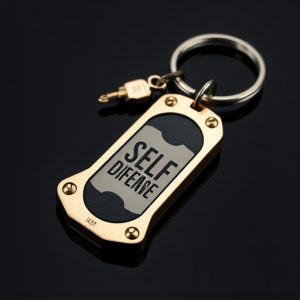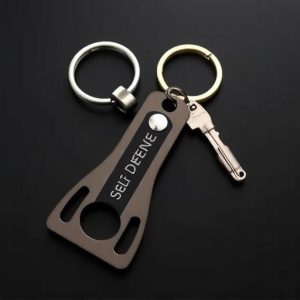Launching Your Self Defense Keychain Business: Comprehensive Guide
Market research is vital for launching a successful self-defense keychain venture, focusing on indus…….
Market research is vital for launching a successful self-defense keychain venture, focusing on industry trends, customer preferences, and precise target audience demographics. Product design should be innovative, durable, and functional, with various styles catering to different users. Strategic planning in manufacturing, sourcing, and pricing is essential, including considering in-house production or outsourcing. Leverage digital marketing platforms and collaborate with influencers for exposure, using targeted ads, customer testimonials, and sales strategies highlighting product uniqueness. Implement referral programs and participate in local events to engage directly with potential buyers, while email marketing maintains customer loyalty.
Starting a self-defense keychain business can be a rewarding venture, offering innovative solutions for personal safety. This comprehensive guide takes you through every step from market research to marketing strategies. First, identify your target audience and understand their needs for effective self-defense tools. Next, focus on product development, considering design, materials, and functionality. Learn about manufacturing processes, sourcing reliable components, and setting competitive pricing. Finally, explore marketing techniques, sales channels, and customer engagement tactics to establish a thriving self-defense keychain business.
Market Research and Target Audience Identification
Market research is a crucial step in starting any successful business, and your self-defense keychain venture is no exception. Begin by identifying key trends within the personal safety industry. With the growing popularity of self-defense tools, there’s a significant demand for innovative and portable options. Understanding this trend will help position your keychain as a unique and timely product. Utilize online platforms and social media to gauge customer preferences and feedback regarding similar products already on the market.
Define your target audience carefully. Self-defense keychains are likely to appeal to a diverse range of individuals, from urban professionals seeking convenient personal safety measures to outdoor enthusiasts who need reliable tools for their adventures. Consider age groups, lifestyles, and specific concerns that might drive someone’s interest in such a product. Tailoring your marketing and product design to these demographics will ensure your self-defense keychain business resonates with the right customers.
Product Development and Design Considerations
When developing your self-defense keychain business, product design should be a top priority. Consider incorporating features that set your keychains apart from competitors. This could include innovative shapes, durable materials, and practical functions beyond just being a standard keychain. Think about adding components like flashlights, personal alarm systems, or even mini pepper spray bottles to enhance its utility for self-defense purposes.
The design should also cater to diverse user needs and preferences. Offer a range of sizes, colors, and styles to appeal to a broad market. Ensure your keychains are ergonomic and comfortable to carry, encouraging customers to keep them readily accessible. Additionally, focus on creating an attractive packaging design that reflects the product’s functionality, making it appealing to potential buyers searching for effective self-defense tools in a compact form factor.
Manufacturing, Sourcing, and Pricing Strategy
Starting a self-defense keychain business involves careful consideration of manufacturing, sourcing, and pricing strategies. Manufacturing your keychains in-house allows for quality control and ensures each product meets your standards. It also enables customization options to cater to diverse customer preferences. However, setting up production facilities requires initial investments in machinery, equipment, and hiring skilled labor. Alternatively, you can outsource manufacturing to specialized manufacturers, leveraging their expertise and resources to produce high-quality keychains cost-effectively.
Sourcing raw materials is another critical aspect. Opting for reliable suppliers ensures a steady supply of quality materials at competitive prices. Common materials for self-defense keychains include metal alloys, such as stainless steel or aluminum, which offer durability and strength. When sourcing, consider both local and international options to find the best deals without compromising on material quality. Pricing strategy should be market-driven, balancing production costs, competition, and perceived value. Offering a range of prices caters to different customer budgets while maintaining profitability. Additionally, bundle deals or subscription models can enhance customer loyalty and revenue streams for your self-defense keychain business.
Marketing, Sales, and Customer Engagement Plan
To market your self-defense keychain business effectively, leverage digital platforms like social media (Instagram, Facebook) and a user-friendly website to showcase products, share customer testimonials, and run targeted ads. Collaborate with influencers in the self-defense or survivalist communities to gain exposure. Offer discounts for first-time purchases and bundle deals on multiple keychains to encourage higher sales volume.
Sales strategy should focus on highlighting the unique features of your keychains—like compact design, durability, and concealed carry options. Implement a referral program where satisfied customers can earn rewards for referring new buyers. Participate in local events like trade shows or survivalist fairs to directly engage with potential customers. An email marketing campaign with informative newsletters about self-defense tips and product updates can also foster customer loyalty and drive repeat purchases.


